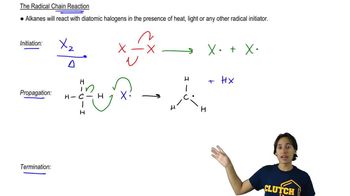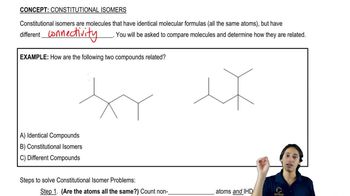A halogenation intended to make compound A formed B instead.
(c) Given the two mechanisms you drew, why might B have formed selectively?

 Verified step by step guidance
Verified step by step guidance Verified video answer for a similar problem:
Verified video answer for a similar problem:



 2:05m
2:05mMaster The one reaction that alkanes will actually undergo. with a bite sized video explanation from Johnny
Start learning